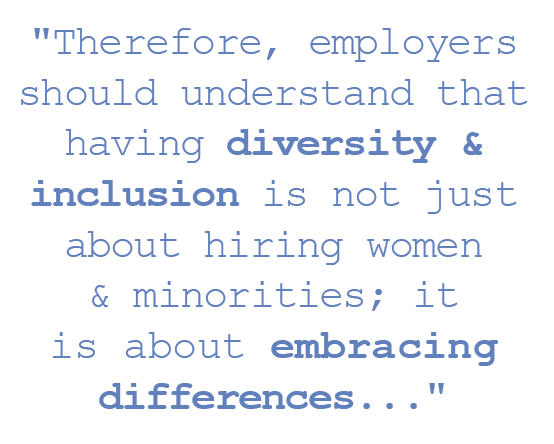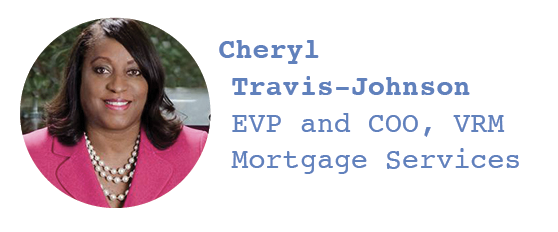

Diversity and inclusion within organizations is transparent when there is an intentional effort to recognize and celebrate the differences that each employee holds and the organization embraces these differences in its supplier selection process. Companies must have documented programs in place, including employee training and adherence accountability to demonstrate commitment. Organizational leaders should not just verbalize their commitment; but, have people and programs in place that promote diversity and inclusion without exclusionary practices that contradict their commitment. In addition, an assigned compliance officer for programs is an effective way to achieve desired results.
Enhancing organizational diversity and inclusion begins with building awareness. Companies should start by performing a diversity and inclusion self-assessment using Section-342 of Dodd Frank as a guide. Utilizing a self-assessment will help leaders identify gaps and challenges within their organization’s diversity and inclusion efforts.
Proper employee and supplier sourcing practices are vital components to effective diversity and inclusion programs. The key to success, relative to hiring and sourcing, is to use methods that locate a diverse pool of candidates or suppliers. It is important to understand that onboarding diverse employees and suppliers is just one step in the diversity and inclusion process. In conjunction with sound recruiting practices, organizations must develop a culture, infrastructure and processes to support the sustainability of these employees and suppliers.
 Educating resources on the economic benefits of diversity and inclusion is critical. In their 2013 Mending the Gender Gap, PricewaterhouseCoopers argued that inclusion of women in executive roles is more than a social problem since women make up greater than 50 percent of financial services employees, but less than 20 percent of the executives in the financial services industry. Women hold more than 50 percent of the wealth in the U.S. and are the best source to attract this customer segment. Not recognizing the importance of an inclusive workforce may alienate an entire customer base and could cost a company millions of dollars. Therefore, employers should understand that having diversity and inclusion is not just about hiring women and minorities; it is about embracing differences, which also includes disabilities, religion, sexual orientation, age and any organization affiliations. In fact, over the next decade, millennials and women will be the biggest consumers in the financial services industry, companies not positioning its leadership team to have representation from these groups may face challenges in their outreach efforts.
Educating resources on the economic benefits of diversity and inclusion is critical. In their 2013 Mending the Gender Gap, PricewaterhouseCoopers argued that inclusion of women in executive roles is more than a social problem since women make up greater than 50 percent of financial services employees, but less than 20 percent of the executives in the financial services industry. Women hold more than 50 percent of the wealth in the U.S. and are the best source to attract this customer segment. Not recognizing the importance of an inclusive workforce may alienate an entire customer base and could cost a company millions of dollars. Therefore, employers should understand that having diversity and inclusion is not just about hiring women and minorities; it is about embracing differences, which also includes disabilities, religion, sexual orientation, age and any organization affiliations. In fact, over the next decade, millennials and women will be the biggest consumers in the financial services industry, companies not positioning its leadership team to have representation from these groups may face challenges in their outreach efforts.
The goal for every company should be to normalize diversity and inclusion efforts and make these programs a natural part of recruiting and sourcing efforts. Leaders need to understand that diversity and inclusion programs and affirmative action programs are not the same. Recruiting quotas are not relevant if sourcing efforts deliver diverse candidates and suppliers and organizational leaders base the selection process on the evaluation of applicable skills and experience. Inclusion does not insinuate reserving opportunities; instead, it means equal access to all opportunities, without exception.


 Login
Login
